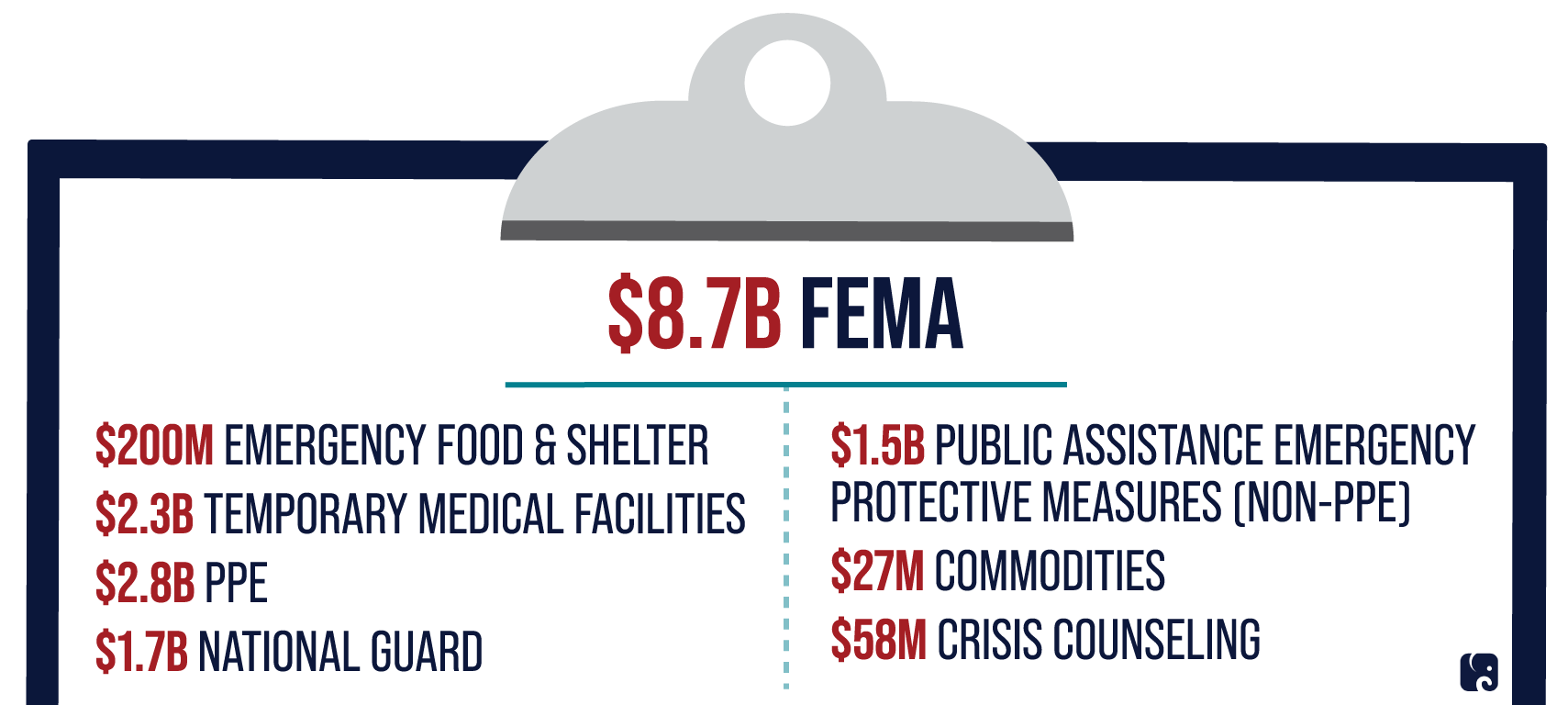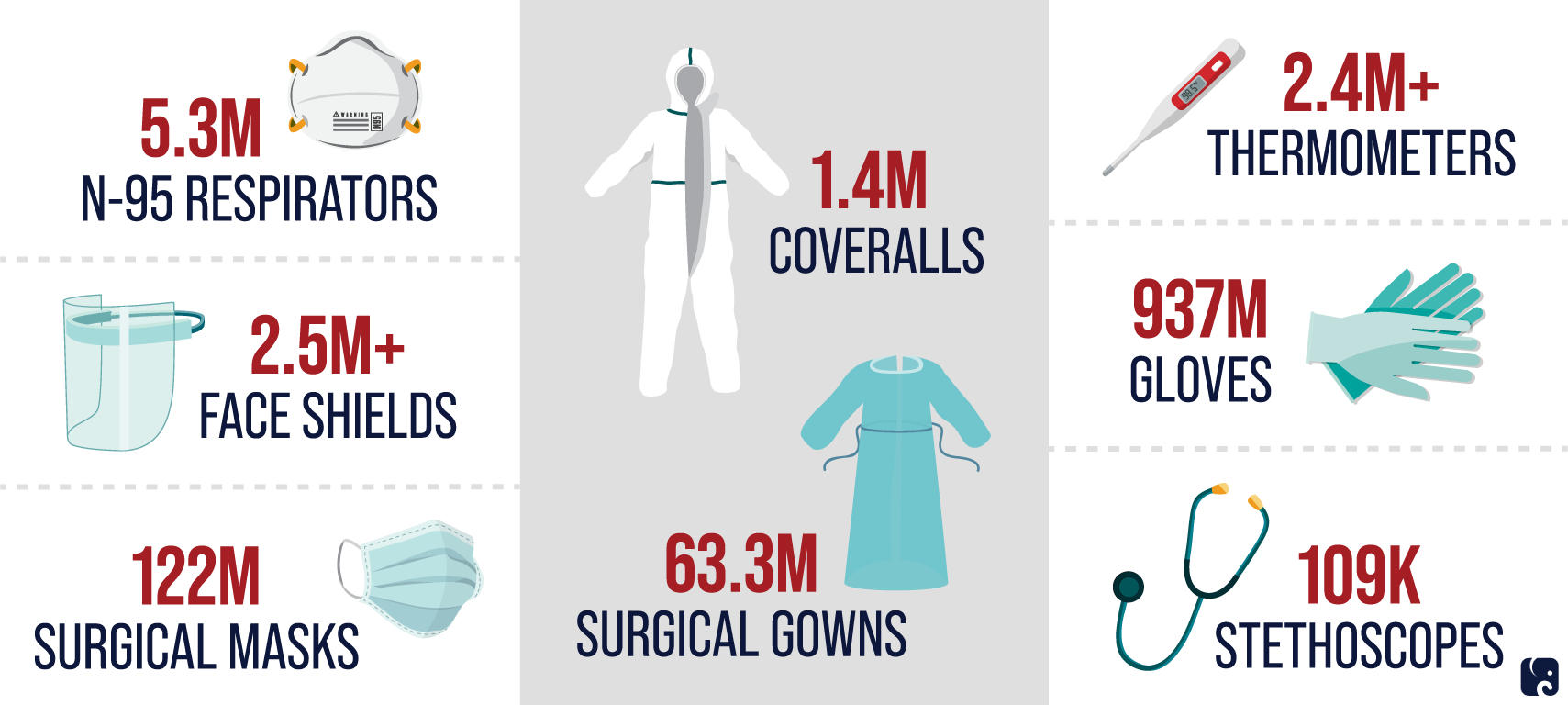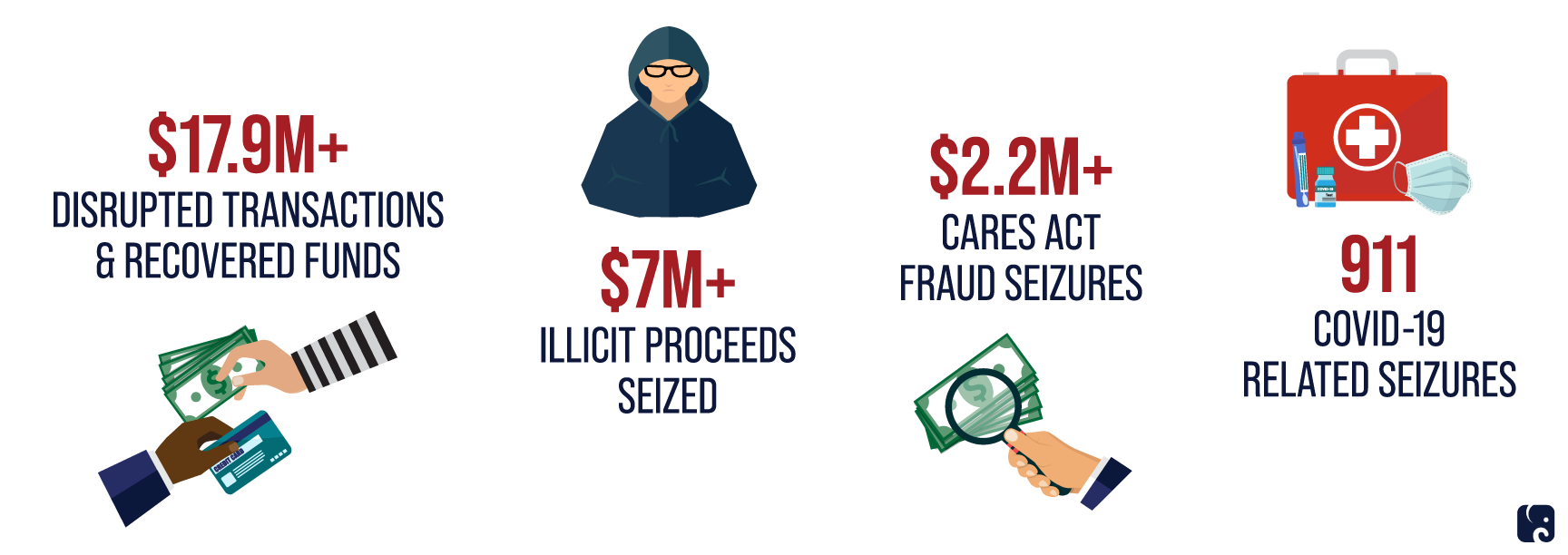DHS' Role in COVID-19 Response
KEY TAKEAWAYS
- The Department of Homeland Security plays a key role in coronavirus response.
- On March 19, the Trump administration designated the Federal Emergency Management Agency to coordinate the federal response to the coronavirus pandemic.
- At DHS, Customs and Border Protection, TSA, the Countering Weapons of Mass Destruction Office, and the Cybersecurity and Infrastructure Security Agency have all taken steps to help protect the public from the impacts of the virus.
On March 13, President Trump declared a national emergency in response to COVID-19. He also has approved every state to for a major disaster declaration. Under the declarations, the Federal Emergency Management Agency, part of the Department of Homeland Security, took a lead role to coordinate the federal government’s response to COVID-19. Other agencies at DHS also play vital parts in helping protect the public during the pandemic.
How FEMA Has Allocated Funds So Far

DIREcting the Response and Securing Supplies
On March 19, the Trump administration officially designated FEMA as the response coordinator for the coronavirus pandemic, and FEMA activated the National Response Coordination Center at its highest level. When active, the center is typically used by representatives from various agencies to help coordinate a “whole-of-government” response to national disasters and other emergencies. State executives issue their requests to the NRCC through their FEMA regions. This centralized process allows federal agencies, state and local authorities, and the private sector to streamline their efforts in responding to the virus.
FEMA also plays a role in securing the supply chains for personal protective equipment, testing supplies, and other medical equipment. It launched a temporary effort called Project Airbridge in March to help get vital materials, often in short supply, where they were needed most. These materials would normally travel by ship from the manufacturers in Asia, taking 30-40 days to reach their destination in the U.S. By the time the effort ended in June, Project Airbridge had used nearly 250 flights to move supplies across the Pacific and around the country in two days or less. The expedited equipment was then sold and distributed around the U.S., with 50% of PPE going to hotspots around the country and 50% going to traditional distribution channels. The operation bought valuable time as the U.S. built more robust supply lines and domestic production capacity.
Project Airbridge Moved a Massive Amount of Supplies Quickly

Since the beginning of the crisis, Congress has appropriated $45.9 billion to DHS. The majority of that money went to the Disaster Relief Fund, which pays for FEMA’s response efforts. FEMA has allocated $8.7 billion so far to efforts like workforce protection, constructing temporary medical facilities, and supporting the president’s testing and reopening strategy. FEMA can use the unobligated DRF money to respond to COVID-19 related crises as they occur or for other federally declared disasters, such as hurricanes, floods, and wildfires.
PROTECTIng the Public
Following the 2001 anthrax attacks, DHS created the National Biodefense Analysis and Countermeasures Center to research biological agents that might be against the United States. Today the center, part of the DHS Science and Technology Directorate’s lab network, is researching how environmental exposure affects the virus that causes COVID-19. DHS scientists can measure a large number of variables and environmental conditions to help other researchers in the government and private sector understand the virus. The department is making research available through user-friendly tools, so people can understand the risks of COVID-19 exposure in various conditions.
DHS’ Cybersecurity and Infrastructure Security Agency released voluntary guidance for state and local authorities to ensure that critical infrastructure remains operational during the pandemic. The energy, health care, food, agriculture, and communications industries are all essential to keeping our country running. CISA also is working with Immigration and Customs Enforcement, CBP, and other federal agencies to combat fraud. In early March, CISA published guidance on how people can avoid COVID-19 cyber scams, and it is working to block malicious internet domains and e-mails related to coronavirus fraud. CISA released an advisory in mid-July highlighting cyber threats to U.S. coronavirus vaccine research.
Operation Stolen Promise Statistics

In one major law enforcement effort led by ICE, called Operation Stolen Promise, agents have seized millions of dollars of illicit proceeds, arrested fraudsters, and intercepted shipments of fraudulent and unauthorized medical products such as homeopathic remedies, pharmaceuticals, and test kits.
Customs and Border Protection provided an early line of defense against COVID-19. Since January, CBP has used 15 airports as entry points for U.S. passengers returning from China, Iran, Brazil, and certain European countries. Another agency at DHS, the Countering Weapons of Mass Destruction Office, helps provide COVID-19 medical screenings at these locations. As of July 25 CBP has flagged 487,705 passengers for health screenings conducted by CWMD. Border Patrol agents also are working to identify and screen people in their custody who pose a risk of carrying the disease.
Ships entering U.S. ports are monitored by the U.S. Coast Guard to protect against the coronavirus. As of July 24, the USCG is monitoring 65 cruise ships close to the U.S. The USCG is working with the Centers for Disease Control and Protection to safely get crew members off of cruise ships affected by the CDC’s “no sail” order.
To help keep freight and passengers moving during the pandemic, the Transportation Security Administration relaxed air carrier and cargo rules. TSA relaxed air cargo restrictions and enhanced security procedures to continue processing passengers during the pandemic. The department also moved the deadline for Real ID compliance and will accept state issued identification up to a year after expiration to account for state DMV closures.
Next Article Previous Article
